Attention
Attention deficits are among the most frequent damages in the cognitive sphere, of which, however, the exact frequency has not yet been unanimously determined. A study of the 2013 (Loetscher T et all, 2013) reports a percentage that varies in a range between 46 e 92% in the acute phase (Stapleton T et all, 2001) is between 24 e 51% upon discharge from the hospital (Hyndman D et all, 2008). However, what we can say with certainty is the fact that the incidence of attention deficit resulting from stroke is very high, and Goldberg convincingly illustrates the reasons. "Attention can well be described as a circuit that involves complex interactions between the prefrontal cortex, ventral regions of the brain stem, and posterior cortex. A collapse, at any level in this circuit, it can interfere with attention, thus producing a form of deficit. The first consequence of the previous analysis is that attention deficit is one of the most common repercussions of brain injuries” (Goldberg, E, 2004. Pag. 198).
Attention deficits manifest themselves with anwide variety of symptoms, such as reduced ability to concentrate, distractibility, reduced error checking, difficulty doing more than one thing at the same time, mental slowness and fatigue (Loetscher T et all, 2013).
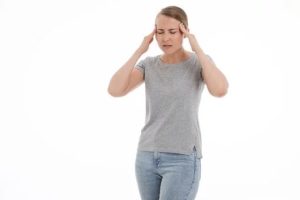
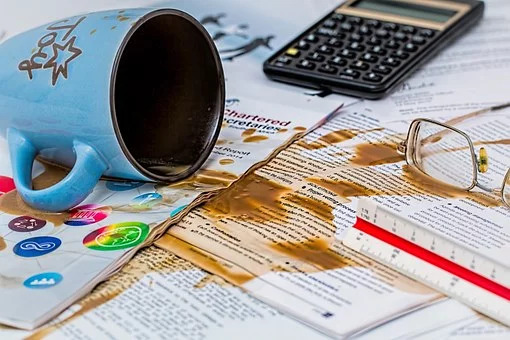
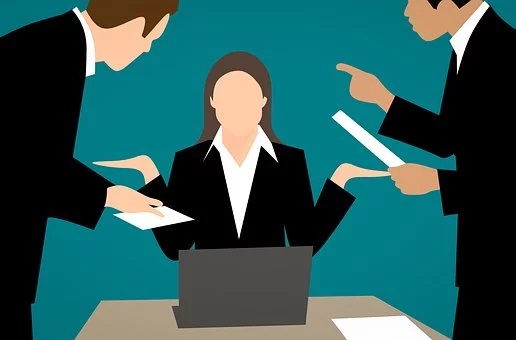
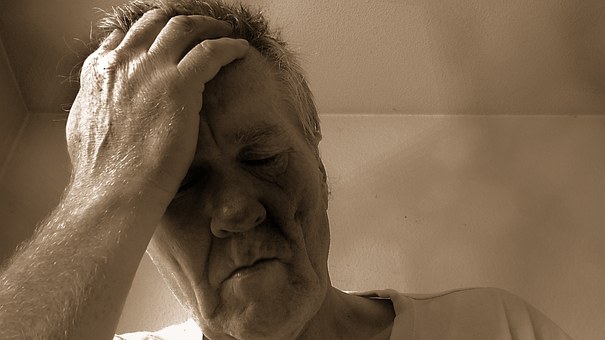
These are limitations that seriously affect the daily life of those affected. It has been demonstrated, for example, that attention deficits in the different components they can help generate behavior prone to cause accidents, with particular regard to accidental falls (Hyndman, D. et all, 2003) and are also associated with the control of the’Balance and functional impairment (Stapleton T et all, 2001).
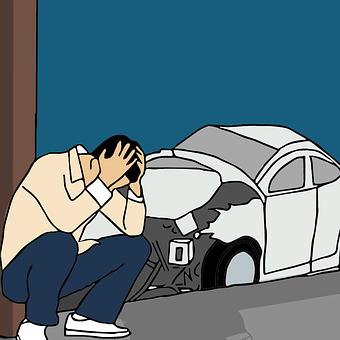
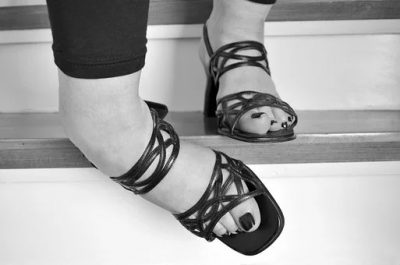

In particular McDowd (McDowd, J and all, 2003) et al. they suggest alternating attention and divided attention as a deficit, often compromised in stroke, seriously hinder social participation and that even a slight deficit of these functions has a major negative impact and therefore suggests that these deficits be treated specifically in the context of post-stroke rehabilitation.
We also know that, attention being involved in many mental processes, its deficit can have a negative impact on other cognitive functions such as language, the memory (Lezak M et all, 2004) and in all forms of learning (Roberson IH et all, 1997.
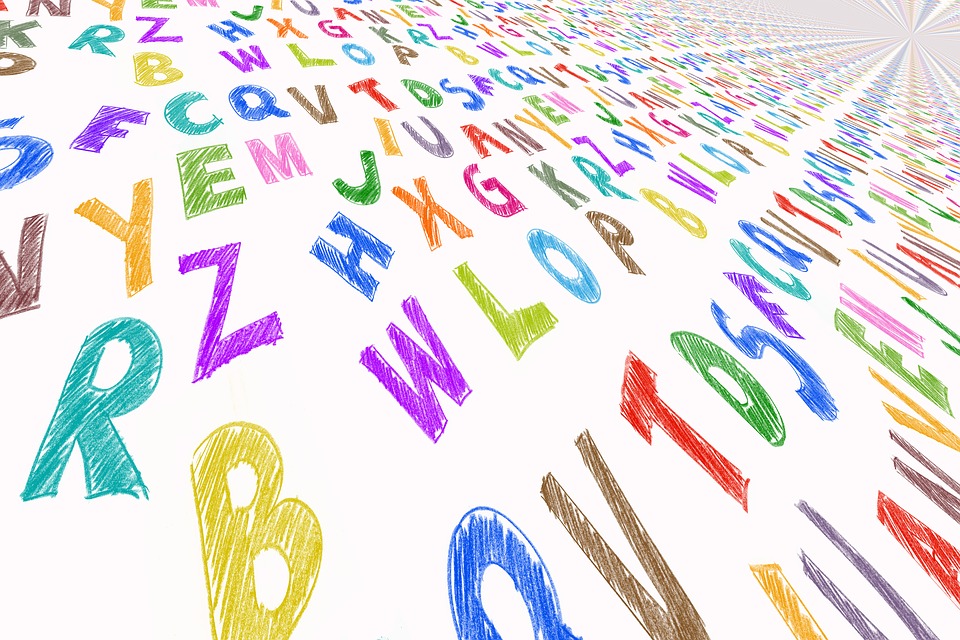


In particular, it seems that a preponderant role is played by’sustained attention, which appears to be largely a function of the right hemisphere (Bench C. J. Et all, 1993) and it is an important one predictive factor for functional recovery (Ben-Yishay et all, 1968). Although the literature shows that attention deficit in some cases (Hochstenbach, J. B. et all, 2003) they can regress over time, in fact l’importance of attention for the purpose of functional recovery suggests the need for early intervention on its rehabilitation. Among other things in the 20-50% of cases, these deficits seem to persist for years in stroke survivors (Barker-Collo S et all, 2010).
L'Early identification and rehabilitation of attention deficit disorders after stroke are vigorously supported by the American Heart Association (Duncan PW et al, 2005).
ATTENTION
Attention, which intuitively seems to be a very clear process, it is actually a very complex phenomenon. In 1890 William James wrote:
"Everyone knows what attention is. It is the taking of possession by the mind, in clear and vivid form, of one of what appear to be multiple simultaneous objects or streams of thought. Focus, concentration of consciousness are its essence. This involves withdrawing from some things in order to deal effectively with others, and it is a condition that finds its real opposite in the confused state, stunned and straggling which in French is called distraction and in German Zerstreutheit ".
E’ It is remarkable that James had sensed that attention operates not only in the sensory flow, but also in the flow of thoughts (Once, A and all, 2004). We can roughly say that attention is a process through which aspects of the environment or ideas stored in our mind are selected in order to reserve them, and to these only, computational resources. The selection process is essential for the limitation of our computational resources (Broadbent DE, 1958).


We often use to define attention metaphors drawn from the visual experience, which is by far the most important and the most studied in man; we therefore speak of a light beam, reflector, zoom, fire, all metaphors that provide intuitive insight. In fact, it is possible to choose whether to examine an environment in a panoramic way or whether to zoom in on particular aspects or move the gaze from one object to another.
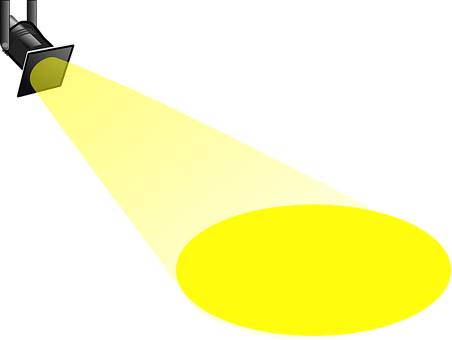


On the other hand, analogous attentional mechanisms can also operate in the auditory modality: in Cocktail party, for example, we can comprehensively perceive the chatter in a room where several conversations take place or we can concentrate on our interlocutor, leaving everything else in the background. E’ It is also possible to shift attention from one auditory stimulus to another, changing interlocutor. In the case of hearing, we can also shift attention from one ear to the other as happens in dichotic listening.
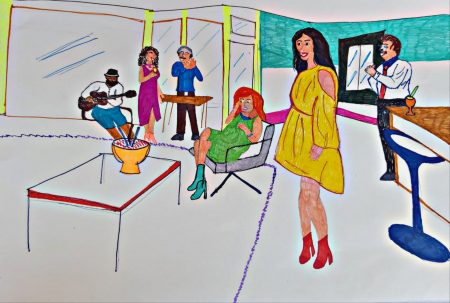
(…) The first formulation of the complexity of the attentional system dates back to Posner's article of 1971(Posner M. I., 1971) (…). (…). In a key article of the 1990 Posner and Petersen (Posner, M. I. et all, 1989) established (that) (…) attention is activated by a network of anatomical areas, (…). The authors identified three distinct functions, (..)connected to three distinct neural networks. The proposed model has since been corrected and refined, but still retains the original layout: three networks for three distinct functions, which today we usually refer to as alerting, orienting e executive:
· alerting (vigilance), whose function consists in activating and maintaining the alert state

· orienting, which is the process by which the information in the sensory flow is selected

· executive, which is the mechanism for monitoring and resolving conflicts between thoughts, feelings and responses.

MAIN REHABILITATION METHODS
The various standardized methodologies are indispensable for a serious approach to the problem of rehabilitation, but their function is only to provide a framework, within which the therapist is fully responsible outline a highly personalized rehabilitation path for each patient (Michel, J. A. et all, 2006).
The main methodologies for the rehabilitation of attention deficits are l’ Attention Process Training (APT), Time Pressure Management (TPM), the Training of specific skills and the Working Memory Training (VMT).
ATTENTION PROCESS TRAINING (APT)
L’A.P.T (Haskins EC et all, 2012) is a structured attention training program developed by McKay Moore Sohlberg and Catherine A. Mateer.
It is based on a clinical model of attention, which identifies five distinct types of attention : focused attention, sustained, selective, alternating and divided.
· L’focused attention it is the ability to respond distinctly to specific sensory stimuli (visual, auditivi, tactile). (…)
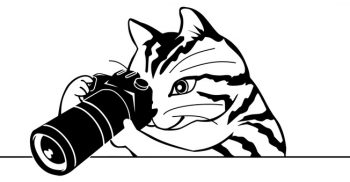
· L’sustained attention is the ability to maintain a consistent behavioral response during a continuous and repetitive activity. There are two distinct components in it: vigilance and working memory. Loss of vigilance involves the inability to maintain consistency of responses for more than a short period of minutes or seconds. The deficit in working memory implies the inability to manipulate information and keep it in the mind.
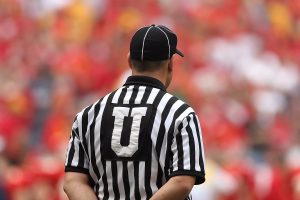
· L’selective attention is the ability to (carry out a task), despite the presence of distracting or competitive stimuli, external (sensory) or interior.

· L’alternating attention (…) (is the possibility) to focus from time to time on distinct tasks that require different cognitive skills.

· L’divided attention (…) (it allows to) respond simultaneously to multiple tasks. (…).

Nell’Attention Process Training:
· Training tasks must follow a hierarchical order. When and only when a patient has acquired the ability to perform a certain exercise, the treatment passes to higher levels of complexity.
· Repetition of the task and intensive exercise they are essential requirements for the patient to acquire the ability to perform it correctly.
· Attention training should include tasks that promote the generalization of strategies. Putting them into practice in other contexts is a fundamental step towards generalization.
TIME PRESSURE MANAGEMENT
Patients who have had a stroke or head injury often experience slowed information processing, in particular when they are under pressure or have limited time to carry out an activity. There is an overload for cognitive functions.
It T.P.M. (Haskins et all, 2012) proposes structured problem-solving strategies that allow a control and regulation of the information inputs (Fasotti et al, 2000). It TPM trains patients to make the necessary decisions in time both before and during the performance of a task. The authors identified three levels of approach:
Strategic decisions. A preventive planning of the task to be performed helps to balance and minimize the problems that this can entail. It is essential to avoid an overload in information processing.I

Tactical decisions. Needed when planning changes need to be made while the task is being performed.
Actions at the operational level. There may be a need to make very quick decisions, above the patient's time limits (because the situation requires an immediate response to a stimulus).
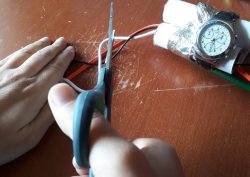
TRAINING OF SPECIFIC SKILLS
This approach is aimed at training or retraining meaningful skills from a functional point of view such as driving a car, o specific professional activities. Nello specific skill training, unlike the APT, there is no expectation that the patient will be able to generalize the skills (the skills) learned and find benefit even in tasks that have not been subject to rehabilitation.

WORKING MEMORY TRAINING (VMT)
Working memory training is used in VMT to indirectly rehabilitate attention in patients with subacute stroke.
ATTENTION AS A PREREQUISITE FOR REHABILITATION
The importance of attention to recovery and maintenance emerges from the literature, not just cognitive functions, but also of the motor ones. In fact, there is little possibility of effectively intervening on cognitive deficits as a whole regardless of attention (McDowd J. M., 2003), and also attention deficits, when associated, as it often happens, to a compromised communicative function caused by language deficit, they induce a high risk of cognitive decline (Ballard C, 2003).
Also the recovery of motor deficits resulting from stroke strongly depends on the integrity of attention, in particular of the one sustained, as Robertson et all have shown (Robertson, I. H. et all, 1997).

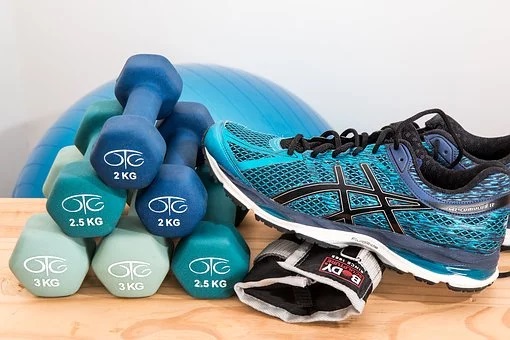
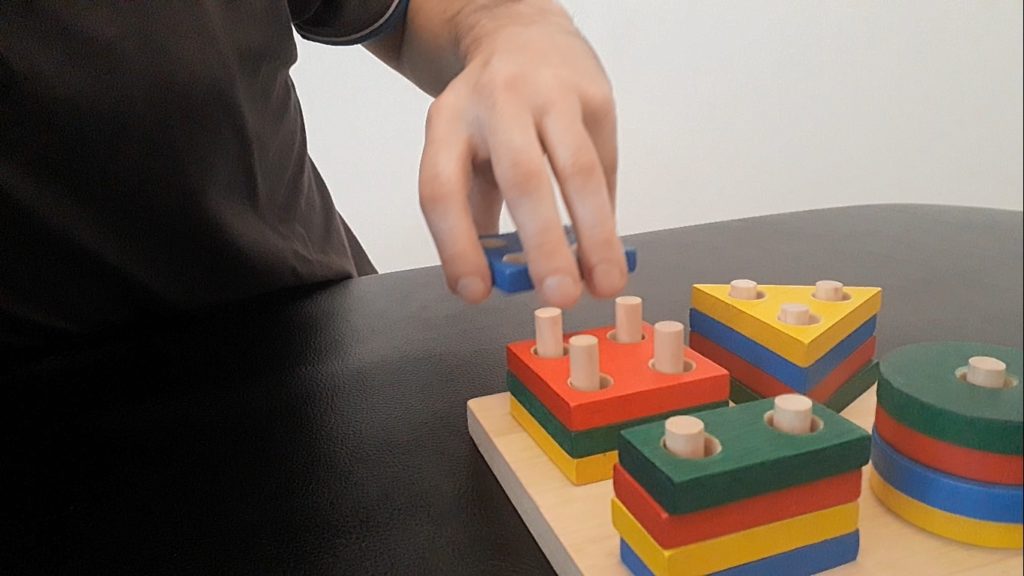
Considering that attention is very frequently compromised (Goldberg, E., 2004) in stroke, as well as in head trauma , the problem of its rehabilitation arises almost invariably in every neuro-rehabilitative intervention. The rehabilitation process must be cut to size (tailored) so that it can answer to the individuality of the patient, and therefore a comprehensive approach must be proposed (Michel, J. A. et all, 2006).

_______________________________
BIBLIOGRAPHY:
Armstrong-James, M., & Fox, K. Effects of iontophoresed noradrenaline on the spontaneous activity of neurones in rat primary somatosensory cortex. Journal of Physiology,1983; 335,427^47.
Aston-Jones G., Cohen JD. An integrative theory of locus coeruleus-norepinephrine function: adaptive gain and optimal performance.Annu. Rev. Neurosci. 2005; 28: 403-450.
Ballard C, Rowan E, Stephens S, et al. Prospective follow-up study between 3 and 15 months after stroke: Improvements and decline in cognitive function among dementia-free stroke survivors.75 years of age. Stroke 2003;34:2440–4.
Barker-Collo SL, Feifin VL, Lawes CMM. Reducing Attention Deficits After Stroke Using Attention Process Training. A randomizet Controlled Trial. Stroke, 2009 – Am Heart ASSoc.
Barker-Collo S, Feigin VL, Parag V, Lawes CMM, Senior H. Auckland Stroke Outcomes Study Part 2; cognition and functional outcomes 5 years post stroke. Neurology 2010; 75:1608-18.
Bates, E., Wilson, S. M., Saygin, A. P., Dick, F., Serene, M. I., Knight, R. T., & drunks, N. F. (2003). Voxel-based lesion–symptom mapping. Nature neuroscience, 6(5), 448-450.
Ben-Yishay Y, Diller L, Rattok J. A modular approache to optimizing orientation, psychomotor alertness and purposive behavior in severe head trauma patients. Working approaches to remediation of cognitive deficits in brain damaged persons. Rehabilitation Monograph n. 59. New York University Medical Centre: Institute of Rehabilitation Medicine, 1978:63-7.
Ben-Yishay, Y., Diller, L., Gerstman, L., & Haas, A. The relationship between impersistence, intellectual function and outcome of rehabilitation in patients with left hemiplegia. Neurology. 1968; 18, 852-861.
Blanc-Garin, J. Patterns of recovery from hemiplegia following stroke. Neuropsychol&gical Rehabilitation.1994; 4, 359-385.
Bench, C. J., Frith, C. D., Grasby, P. M., Friston, K. J., Paul, E.,Frackowiak, R. S. J., & Dolan, R. J. Investigations of the functional anatomy of attention using the Stroop test. Neuropsychologia. 1993;31, 907-922.
Broadbent DE, Cooper PF, FitzGerald P, Parkers KR. The Cognitive Failures Questionnaire (CFQ) and ins correlates. British Journal of Clinical Psychology 1982;21:1-16.
Broadbent DE. Perception and communication. Elmsford, NEW, US: Pergamon Press. 1958; pp. 81-107.
Boman, I. L., Lindstedt, M., Hemmingsson, H., & Bartfai, A. (2004). Cognitive training in home environment. Brain Injury, 18(10), 985-995.
Botvinick, M. M., Braver, T. S., Rev., D. M., Carter, C. S., & Cohen, J. D. (2001). Conflict monitoring and cognitive control. Psychological review, 108(3), 624.
Botvinick, M., Nystrom, L. E., Fissell, K., Carter, C. S., & Cohen, J. D. (1999). Conflict monitoring versus selection-for-action in anterior cingulate cortex.Nature, 402(6758), 179-181.
Bush, G., Luu, P. & Posner, M. I. Cognitive and emotional influences in anterior cingulate cortex. Trends Cogn. Sci. 2000; 4, 215–222.
Botvinick, M. M., Braver, T. S., Rev., D. M., Carter, C. S., & Cohen, J. D. Conflict monitoring and cognitive control. Psychological review. 2001; 108(3), 624.
Botvinick, M., Nystrom, L. E., Fissell, K., Carter, C. S., & Cohen, J. D. Conflict monitoring versus selection-for-action in anterior cingulate cortex.Nature. 1999; 402(6758), 179-181.
Broadbent DE. Perception and communication. 1958; (pp. 81-107). Elmsford, NEW, US: Pergamon Press .
Broadbent DE, Cooper PF, FitzGerald P, Parkers KR. The Cognitive Failures Questionnaire (CFQ) and ins correlates. British Journal of Clinical Psychology 1982;21:1-16.
SF hood, Benke T, Clarke S, Rossi B, Voices B, CM. EFNS guidelines on cognitive rehabilitation: report of an EFNS task force. European Journal of Neurology 2005; 12:665-80.
Carter LT, Oliveira DO, Duponte J, Lynch SV. The relationship of cognitive skills performance to activities of daily living in stroke patients. Am J Occup Ther 1988;42:449-55.
Cicerone, K. D., Dahlberg, C., Decrease, J. F., Langenbahn, D. M., Felicetti, T., Kneipp, S., Giacino, J. T. Rehabilitation of Attention after Brain Injury. American Congress of Rehabilitation Medicine 2002.
Cicerone, KD, Dahlberg C, Kalmar K, Langenbahn DM, Decrease, JF, Bergquist TF, Morse PA. Evidence-based cognitive rehabilitation recommendations for clinical practice. Archives of Physical Medicine and Rehabilitation. 2000; 81: 1596-1615.
Cicerone KD. Remediation of “working attention” in mild traumatic brain injury. Brain Injury 2002;16:185-95.
Cicerone, K. D., Dahlberg, C., Decrease, J. F., Langenbahn, D. M., Felicetti, T., Kneipp, S., Giacino, J. T. Rehabilitation of Attention after Brain Injury. American Congress of Rehabilitation Medicine 2002.
Cicerone KD, Dahlberg C, Malec JF, Langerbahn MD, Felicetti T, Kneipp S, Ellmo W, Kalmar K, Giacino JT, Harley JP, Laatsch L, Morse PA, Catanese J. Evidence–Based Cognitive Rehabilitation: Updated Review of the Literature From 1998 Trough 2002. Archives of Physical Medicine and Rehabilitation. 2005; 86: 1681-1692.
Cicerone KD, Donna M, Langenbahn DM, Braden C, Malec JF, PhD, Kathleen Kalmar, PhD, Michael Fraas, PhD, Thomas Felicetti, PhK, Linda Laatsch, PhD, Harley JP, Azulay J, Cantor J, Ashman T. Evidence-Based Cognitive Rehabilitation: Updated Review of The literature From 2003 Through 2008. Arch Phys Med Rehabil 2011; 92:519-30.
Rabbit CA. Direct attention training as a treatment for reading impairment in mild aphasia. Aphasiology 2005; 19:275-83.
Coffey C. Edward, Cummings Jeffrey L, Starkstein Sergio, Robinson Robert. Stroke – the American Psychiatric Press Textbook of Geriatric Neuropsychiatry (Second ed.). Washington DC: American Psychiatric Press. 2000;pp. 601–617.
Consensus Development Panel on Rehabilitation of Persons with Traumatic Brain Injury, NIH (US National Institute of Health), JAMA. 1999; 282:974-983.
Corbetta M, Shulman GL. Control of goal-directed and stimulus-driven attention in the brain. Nature reviews neuroscience. 2002; 3(3): 201-215.
Daniel K, Wolfe CDA, Busch MAB, McKevitt C. What are the social consequences for stroke for working-aged adults? A systematic review. Stroke. 2009;40:431–40.
Dietrich, W. D., Alonso, O., Bust, R., & Ginsberg, M. D. The effect of amphetamine on functional brain activation in normal and post-infarcted rats. Stroke. 1990;27(Suppl. Ill), 147-150.
Donnan GA, Fisher M, Macleod M, Davis SM (May 2008). “Stroke”.Lancet 371 (9624): 1612–23.
Dosenbach NU, Fair D A, Cohen AL, Schlaggar BL, Petersen SE. A dual-networks architecture of top-down control. Trends in cognitive sciences. 2008; 12(3): 99-105.
Duncan PW, Zorowitz R, Bates B, Choi JY, Glasberg JJ, Graham GD, Katz RC, Lamberty K, Shrimp D. Management of adult stroke rehabilitation care: A clinical practice guideline. Stroke. 2005;38:e100–e143.
Eriksen BA, Eriksen CW. “Effects of noise letters upon identification of a target letter in a non- search task”. Perception and Psychophysics. 1974; 16: 143–149.
Fan J, McCandliss BD, summer T, Raz A, Posner M I. Testing the efficiency and independence of attentional networks. Journal of cognitive neuroscience. 2002; 14(3): 340-347.
Fasotti L, Kovacs F, Eling P, Brouwer W. Time pressure management as a compensatory strategy training after closed head injury. Neuropsychological Rehabilitation. 2000; 10:47-65.
Feeney, D. M., Sutton, R. L., Boyeson, M. G., Hovda, D. A., & Dail, W. G. The locus coeruleus and cerebral metabolism:Recovery of function after cerebral injury. Physiological Psychology. 1985; 13, 197-203.
Goldberg, E “Frontal Lobes and the Civilized Mind. The Executive Brain.”; Italian translation: The soul of the brain, Torino 2004, pag 198.
Goldberg E. The new executive brain. Frontal lobes in a complex world. Italian translation 'The symphony of the brain’ 2010, p.126
Goldberg DP. The Detection of Psychiatric Illness by Questionnaire. London: Oxford University Press, 1972.
Gray, JM, Robertson, I, Pentland, B, and Anderson, S. Microcomputer-based attentional retraining after brain damage: a randomized group controlled trial. Neuropsychol Rehabil. 1992;2:97-115.
Granger CV, Hamilton BB. The uniform data system for medical rehabilitation. Report of first admissions for 1992. American Journal of Physical Medicine and Rehabilitation. 1994;73:51-5.
Harley, JP, Allen, C, Braciszeski, TL, Cicerone, KD, Dahlberg, C, Evans, S et al. Guidelines for cognitive rehabilitation. NeuroRehabilitation. 1992; 2: 62-67.
Haskins EC, Cicerone K, Dams-O’Connor K, Eberle R, Langenbahn D, Shapiro-Rosenbaum A. Cognitive rehabilitation manual. Translation evidence-based recommendations into practice. American Congress of Rehabilitation Medicine. 2012. Pag. 76-83.
Hochstenbach, J. B., the Otter, R., & Mulder, T. W. (2003). Cognitive recovery after stroke: a 2-year follow-up. Archives of physical medicine and rehabilitation, 84(10), 1499-1504.
Hyndman D, Pickering RM, Ashburn A. The influence of attention deficits on functional recovery post stroke during the first 12 Month after discharge from hospital. Journal of Neurology, Neurosurgery and Psychiatry 2008; 79: 656-63.
Hyndman, D., & Ashburn, A. People with stroke living in the community: Attention deficits, balance, ADL ability and falls. Disability & Rehabilitation. 2003; 25(15), 817-822.
Imamura. K.. & Kasamatsu, K. Acutely induced shift in ocular dominance during brief monocular exposure. Neuroscience Letters. 1988; 88, 57-62.
Kolb, B., & Sutherland, R. J. Noradrenaline depletion blocks behavioural sparing and alters cortical morphogenesis after neonatal frontal cortex damage in rats. Journal ofNeuroscience. 1992;12, 2321-2330.
Johansson BB. Current trends in stroke rehabilitation. A review with focus on brain plasticità. Acta Neurol Scand: 2011 123:147-159. Copiright 2010 John Wiley and Sons A/S.
Kang EK,Baek MJ., Kim S, Paik NJ. Non invasive cortical stimulation improves post-stroke attention decline. Restor Neurol Neurosci 2008; 27:646-50.
Kewman DG, Seigerman C, Kinter H, Chu S, Henson D, Reeder C. Simulation training of psychomotor skills: teaching the brain- injured to drive. Rehabil Psychol 1985;30:11-27.
Klingberg T, Forssberg H, Westerberg H. Training of working memory in children with ADHD. Journal of Clinical and Experimental Neuropsychology 2002;24: 781–791.
Klingberg T, Fernell E, Olesen P, Johnson M, Gustafsson P, Dahlstro¨m K, Gillberg CG, Forssberg H, Westerberg H. Computerized training of working memory in children with ADHD – a controlled, randomized, double-blind trial. Journal of the American Academy of Child and Adolescent Psychiatry 2005;44:177–186.
Koelsch S.A neuroscientific perspective on music therapy. Ann NY Acad Sci 2009;1169:426-30.
Kolb, B., & Sutherland, R. J. Noradrenaline depletion blocks behavioral sparing and alters cortical morphogenesis after neonatal frontal cortex damage in rats. The Journal of neuroscience. 1992; 12(6), 2321-2330.
For VIH, Limburg M, deHaan RJ. The role of cognitive impairment in the quality of life after ischemic stroke. Journal of Neurology 1996;243:599-604.
Lezak M, Howieson M, Loring D. Neuropsychological Assessment. Fourth Edition. New York: Oxford University Press; 2004.
Lincoln N, Majid M, Weyman N. Cognitive rehabilitation for attention deficits following stroke (Review). The Cochrane Library 2000, Issue 4.
Loetscher T, Lincoln NB. Cognitive rehabilitation for attention deficits following stroke (Review). The Cochrane Library 2013, Issue 5.
Mahoney FI, Barthel D. Functional evaluation: the Barthel Index. Maryland State Medical Journal 1965;14:56-65.
Marrocco, R. T., & Davidson, M. C. Neurochemistry of attention. Parasuraman, Raja (Ed). 1998; The attentive brain. , (pp. 35-50). Cambridge, MA, US: The MIT Press, xii, 577 pp.
McDowd, J. M., Filion, D. L., Pohl, P. S., Richards, L. G., & Stiers, W. Attentional abilities and functional outcomes following stroke. The Journals of Gerontology Series B: Psychological Sciences and Social Sciences. 2003; 58(1), P45-P53.
Mefford, I., Okay, A., Keller, R., Adams, R. N., & Jonsson, G. Epinephrine distribution in human brain. Neuroscience letters. 1978; 9(2), 227-231.
Michel N.A., Mateer C.A. Attention rehabilitation following stroke and traumatic brain injury. A review. Eur Med Phys 2006; 42:59-67.
Mitchell AJ, Kemp S, Benito-Leon J, Reuber M. The influence of cognitive impairment on health-related quality of life in neurological disease. Acta Neuropsychiatrica 2010;22:2-13.
Moscovitch, M. Cognitive resources and dual-task interference effects at retrieval in normal people: The role of the frontal lobes and medial temporal cortex. Neuropsychology. 1994; 8, 524—534.
Murray LL, Keeton RJ, Karcher L. Treating attention in mild aphasia: evaluation of attention process training-II. J Comm Disord 2006; 39:37-61.
Naghavi, M., Wang, H., Lozano, R., Davis, A., Liang, X., Zhou, M., … & Amen, H. (2015). Global, regional, and national age-sex specific all-cause and cause-specific mortality for 240 causes of death, 1990-2013: a systematic analysis for the Global Burden of Disease Study 2013. Lancet, 385(9963), 117-171.
Nouri FM, Lincoln NB. An extended activities of daily living scale for stroke patients. Clinical Rehalibitation 1987; 1:301-5.
Nys GMS, from Zandvoort MJE, van der Worp HB, de Haan EHF, de Kort PLM, Jansen BPW, et al. Early cognitive impairment predicts long-term depressive symptoms and quality of life after stroke. Journal of the Neurological Sciences 2006:147:149-56.
Olesen PJ, Westerberg H, Klingberg T. Increased prefrontal and parietal activity after training of working memory. Nature Neuroscience 2004;7:75–79.
Pardo, J. V., Fox, P. T., & Raichle, M. E. Localization of a human system for sustained attention by positron emission tomography. Nature. 1991; 349, 61-64.
Park, N. W. Evaluation of the attention process training programme.Neuropsychological Rehabilitation. 1999; 9(2), 135-154.
Petersen I KNOW, Posner ME. The attention system of the human brain: 20 years after. Annual review of neuroscience. 2012; 35, 73.
Posner, M. I. & Boies, S. J. Components of attention. Psychol. Rev. 78, 391–408 (1971).
Posner, M. I., & Petersen, S. E. (1989). The attention system of the human brain (No. TR-89-1).
Posner ME. Orienting of attention. Quarterly journal of experimental psychology. 1980; 32(1): 3-25.
Ponsford JL, Kinsella G. Evaluation of a remedial programme for attentional deficits following closed-head injury. Journal of Clinical and Experimental Neuropsychology 1988;10:693-708.
Ponsford J, Kinsella G. The use of a rating scale of attentional behaviour. Neuropsychological Rehabilitation 1991;1:241-57.
Raz A. Anatomy of attentional networks. The Anatomical Record Part B: the New Anatomist. 2004; 281(1): 21-36.
Once, A., & Buhle, J. Typologies of attentional networks. Nature Reviews Neuroscience. 2006; 7(5), 367-379.
Rinne, P., Hassan, M., Goniotakis, D., Chohan, K., Sharma, P., Langdon, D., … & Bentley, P. Triple dissociation of attention networks instroke according to lesion location. Neurology. 2013; 81(9), 812-820.
Rizzo AA, Schultheis M, Kerns KA, Mateer CA. Analysis of assets for virtual reality applications in neuropsychology. Neuropsychol Rehabil 2004;14:207-39.
Robertson IH, Ridgeway V, Nimmo-Smith I. Test of everyday attention. Bury St. Edmunds: Thames Valley Test Company, 1994.
Robertson IH1, Draw R, Tham K, What a, Nimmo-Smith I. Sustained attention training for unilateral neglect: theoretical and rehabilitation implications. J Clin Exp Neuropsychol. 1995 May;17(3):416-30.
Roberson IH, Ridgeway V, Greenfield E, Parr A. Motor recovery after stroke depends on intact sustained attention: a 2-year follow-up study. Neuropsychology 1997; 11:290-5.
Rohring S, Kulke H, Reulbach U, Peetz H. Effectiveness of a neuropsychological training of attention functions in a teletherapeutic setting. 2004.
Roland, P. E. Cortical regulation of selective attention in man: A regional cerebral blood flow study. Journal fNeurophysiology. 1982; 48, 744-754.
Rossi AF, et al. Top down attentional deficits in macaques with lesions of lateral prefrontal cortex. J. Neurosci. 2007; 27:11306–11314.
Sarkamo T, Tervaniemi M, Laitinen S et al. Music listening enhances cognitive recovery and mood after middle cerebral artery stroke. Brain 2008 ; 131:866-76.
Sarkamo T, Pihko E, Laitines S et al. Music and speech listening enhance the recovery of early sensory processing after stroke. J Cogn Neurosci 2009; Nov 19. PMID: 19925203; doi:10.11.1162/jocn.2009,21376.
Schottke H.. (Rehabilitation of attention disorders after a stroke case - effectiveness of behavioral medicine - neuropsychological attention training) Behavior therapy 1997; 7:21-3.
Sinotte MP, Rabbit CA. Attention training for reading impairment in mild aphasia: a follow-up study. NeuroRehabilitation 2007, 22:303-10.
Simon J R. Reactions towards the source of stimulation. Journal of experimental psychology. 1969; 81: 174-176.
Sivak M, Hill CS, Henson DL, Butler BP, Silber SM, Olson PL. Improved driving performance following perceptual training in per- sons with brain damage. Arch Phys Med Rehabil 1984;65:163-7.
Sohlberg M, Avery J, Kennedy M, Ylvisaker M, Rabbit C, Turkstra L, & Yorkston K. Practice guidelines for direct attention training. Journal of Medical Speech-Language Pathology. 2000. 11:29-30.
Sohlberg, M. M., Avery, J., Kennedy, M., Ylvisaker, M., Coelho, C., Turkstra, L., & Yorkston, K. Practice guidelines for direct attention training. Journal of Medical Speech-Language Pathology. 2003; Vol.11 No.3 pp. XIX-XXXIX.
Sohlberg MM, Mateer CA. Improving attention and managing attentional problems. Annals of the New York Academy of Sciences. 2001; 931(1): 359-375.
Sohlberg M., McLaughling K, Pavese A, Heidrich A & Posner M. Evaluation of attention process training and brain injury education in persons with acquired brain injury. Journal of Clinical and Experimental Neuropsychology. 2000; 22:656-676.
stay, C. J., Visser, S. L., Coul, A. A. W. O. d., Sonneville,L. M. J. D., Schellens, R. L. L. A., Brunia, C. H. M., Smet,J. S. d., & Gielen, G. Disturbed frontal regulation of attention in Parkinson’s disease. Brain. 1993; 116, 1139-1158.
Stambrook M, Moore A, Peters LC, Deviane C, Hawryluk GA. Effects of mild, moderate and severe head injury on long term vocational status. Brain Injury 1990;4:183–190.
Stapleton T, Ashburn A, Stack E. A pilot study of attention deficits, balance control and falls in the subacute stage following stroke. Clinical Rehabilitation 2001; 15(4): 437-44.
Stathopoulou S, Lubar JF. EEG changes in traumatic brain injured patients after cognitive rehabilitation. J Neurotherapy 2004; 8:21-51.
Strache, W. Effectiveness of two modes of training to overcome deficits of concentration. Int J Rehabil Res. 1987: 10:141S-145S.
Stroop JR. Studies of interference in serial verbal reactions. Journal of Experimental Psychology. 1935; 18, 643-662.
Storm W, Willmes K. Efficacy of a reaction training on various attentional and cognitive functions in stroke patients. Neuropsychological Rehabilitation 1991; 1:259-80.
Storm W, Longoni F, Weis S.Functional reorganization in patients with right hemisphere stroke after training of alertness: a longitudinal PET and fMRI study in eight cases. Neuropsychologia 2004; 42:434-50.
Storm W, Wilmes K, Orgass B. Do specific attention deficits need specific training? Neuropsychol Rehabil 1997; 7:81 103.
Tonelli, M. R. The philosophical limits of evidence-based medicine. Academic Medicine. 1998; 73(12), 1234-40.
Tonelli, Mark R. The limits of evidence-based medicine. Respiratory care. 2001; 46.12 .
true YOU, Sherbourne CD. The MOS 36-item short-form health survey (SF-36). I. Conceptual framework and item selection. Medical Care 1992;30:473-83.
Westerberg H, Jacobaeus H, Hirvikoski T, et al. Computerized working memory training after stroke-a pilot study. Brain Inj 2007; 21:21-9.
“The top 10 causes of death”. WHO. http://www.who.int/mediacentre/factsheets/fs310/en/index4.html
The WHOQOL Group. The World Helath Organization Quality of Life Assessment (WHOQOL): development and general psychometric properties. Social Sience Medicine 1998;46:1569-85.
Whyte J, Vaccaro M, Grieb-Neff P. Psychostimulant use in the rehabilitation of individuals with traumatic brain injury. J Head Trauma Rehabil 2002; 17:284-99
Whyte J, Hart T, Vaccaro M, Grieb-Neff P, Risser A, Polansky M et al. Effects of methylphenidate on attention deficits after traumatic brain injury: a multidimensional, randomized, controlled trial. Am J Phys Med Rehabil 2004; 83:401-20.
Whyte J, Hart T, Bode RK, Malec JF. The moss Attention Rating Scale for traumatic brain injury: initial psychometric assessment. Archives of Physical Medicine and Rehabilitation. 2003;84:268-76.
Wilson C, Robertson IH. A home-based intervention for atten- tional slips following head injury: a single case study. Neuropsychol Rehabil 1992;2:193-205.
White E A, Marrocco R T. Alteration of brain noradrenergic activity in rhesus monkeys affects the alerting component of covert orienting. Psychopharmacology. 1997; 132(4): 315-323.
White E A, Davidson MC, Marrocco RT. Effects of altering brain cholinergic activity on covert orienting of attention: comparison of monkey and human performance. Psychopharmacology. 1997; 132(4): 324-334.
Winkens I, Van Heugeten C, Fasotti L, Wade D. Reliability and validity of two new instruments for measuring aspects of mental slowness in the daily lives of stroke patients. Neuropsychologilacal Rehabilitation. 2009; 19:64-85.
Winkens I, Van Heugeten C, Wade D, Fasotti L. Training patients in Time Pressure Management: A cognitive strategy for mental slowness. Clinical Rehabilitation. 2009;23:79-90.
White E A, Davidson MC, Marrocco RT. Effects of altering brain cholinergic activity on covert orienting of attention: comparison of monkey and human performance. Psychopharmacology. 1997; 132(4): 324-334. .
Wood, Rodger LI. PhD. Rehabilitation of patients with disorders of attention. Journal of Head Trauma Rehabilitation: September 1986 – Volume 1 – Issue 3 – ppg 43-53.
Ylvisaker, M., Coelho, C., Kennedy, M., Sohlberg, M. M., Turkstra, L., Avery, J., & Yorkston, K. (2002). Reflections on Evidende-based practice and Rational Clinical Decision Making. Journal of Medical Speech-Language Pathology. 2002; vol 10, number 3, 25, pp-33.
Zatorre RJ, Chen JL, Penhune VB. When the brain plays music: auditori motor interactions in music perception and production. Nat Rev Neurosci 2007; 8: 547-58.
Zigmond AS, Snaith RP. The Hospital Anxiety and Depression Scale. Acta Psychiatrica Scandinavica 1983;67:361-70.